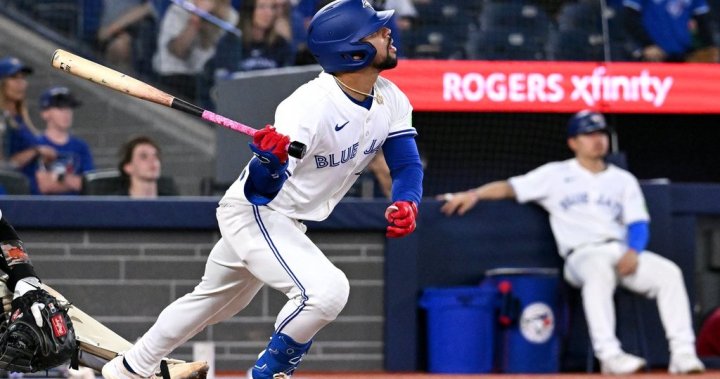The crack of the bat echoing through Rogers Centre hasn’t quite delivered the resounding victory chants Toronto fans hoped for this season. As we approach the quarter mark of the 2024 MLB campaign, the Blue Jays’ offensive performance has been, to put it generously, underwhelming. Yet amid mounting pressure and disappointing statistics, manager John Schneider maintains an air of calm optimism that seems either admirably steadfast or increasingly detached from reality—depending on which side of the fan spectrum you fall.
“I think we’re close,” Schneider told reporters following another anemic offensive showing. “These guys have track records. They’re going to figure it out.”
Track records, indeed. The Blue Jays roster boasts names that should inspire confidence: Vladimir Guerrero Jr., Bo Bichette, George Springer—players whose baseball cards feature impressive career numbers. Yet something curious happens when these individual talents don the Blue Jays uniform this season; collectively, they transform into one of baseball’s least productive offenses.
The numbers paint a sobering picture. Toronto currently ranks near the bottom of the league in runs scored, home runs, and team OPS. Their situational hitting—particularly with runners in scoring position—has been especially troubling, with the team batting a paltry .215 in such scenarios. For a lineup constructed to slug its way to contention, these statistics represent more than a slow start; they suggest fundamental issues within the offensive approach.
What makes this particularly frustrating for Toronto’s passionate fanbase is the stark contrast with the team’s pitching staff, which has largely held up its end of the bargain. The rotation, anchored by Kevin Gausman and José Berríos, has kept the Blue Jays competitive in most games, only to watch potential wins dissolve in a haze of stranded baserunners and rally-killing double plays.
Schneider’s patience might stem from the underlying metrics that suggest some bad luck is at play. Several Blue Jays hitters have exit velocities and hard-hit rates that don’t align with their disappointing results. Baseball’s analytical community would point to these discrepancies as evidence that positive regression is coming.
“Sometimes you just need to see one fall in,” Schneider noted. “Baseball has a way of evening out.”
However, the clock doesn’t stop ticking while waiting for statistics to normalize. In the hypercompetitive AL East, where the Yankees and Orioles have established early dominance, each game carries significant weight. The Blue Jays’ window of contention—particularly with certain contract situations looming—adds urgency to their current offensive crisis.
The front office faces mounting questions about potential adjustments. Is it time to shake up the batting order more dramatically? Should roster changes be considered sooner rather than later? Team president Mark Shapiro and GM Ross Atkins have historically favored patience over panic, but fan frustration grows more palpable with each scoreless inning.
Perhaps what’s most telling about the Blue Jays’ situation is the contrast between the public confidence displayed by management and the visible frustration from players themselves. Cameras frequently capture Guerrero or Bichette’s exasperation after another well-hit ball finds a glove or a promising rally fizzles. These reactions suggest the team knows their performance isn’t merely bad luck—something fundamental needs addressing.
As Toronto’s sports culture continues its perpetual cycle of hope and disappointment (just ask CO24 Trends readers about the emotional rollercoaster of being a Toronto sports fan), the Blue Jays represent a particularly interesting case study. They exemplify how quickly narrative can shift in modern sports—from promising contender to disappointing underachiever in the span of weeks.
The Blue Jays’ struggles also reflect a broader cultural phenomenon in professional sports: the tension between analytics-based patience and the emotional immediacy demanded by fans. When Schneider says “they’re going to figure it out,” he’s making a statement supported by statistical probability—but baseball isn’t played on spreadsheets, and seasons can slip away while waiting for numbers to normalize.
For now, Toronto finds itself at a crossroads typical of underperforming teams with high expectations. The coming weeks will determine whether Schneider’s optimism was prescient or merely wishful thinking. Will Toronto’s bats awaken from their collective slumber, or is this lineup fundamentally flawed despite its impressive individual parts?
As one veteran baseball scout told me recently, “Sometimes a team is less than the sum of its parts, and that’s the hardest problem to fix.”
Blue Jays fans certainly hope Schneider has the solution—and soon. In the unforgiving AL East, time and patience are luxuries the team can ill afford.
For more opinions on Toronto sports and analysis of the Blue Jays’ season, stay connected with us as this story develops.










